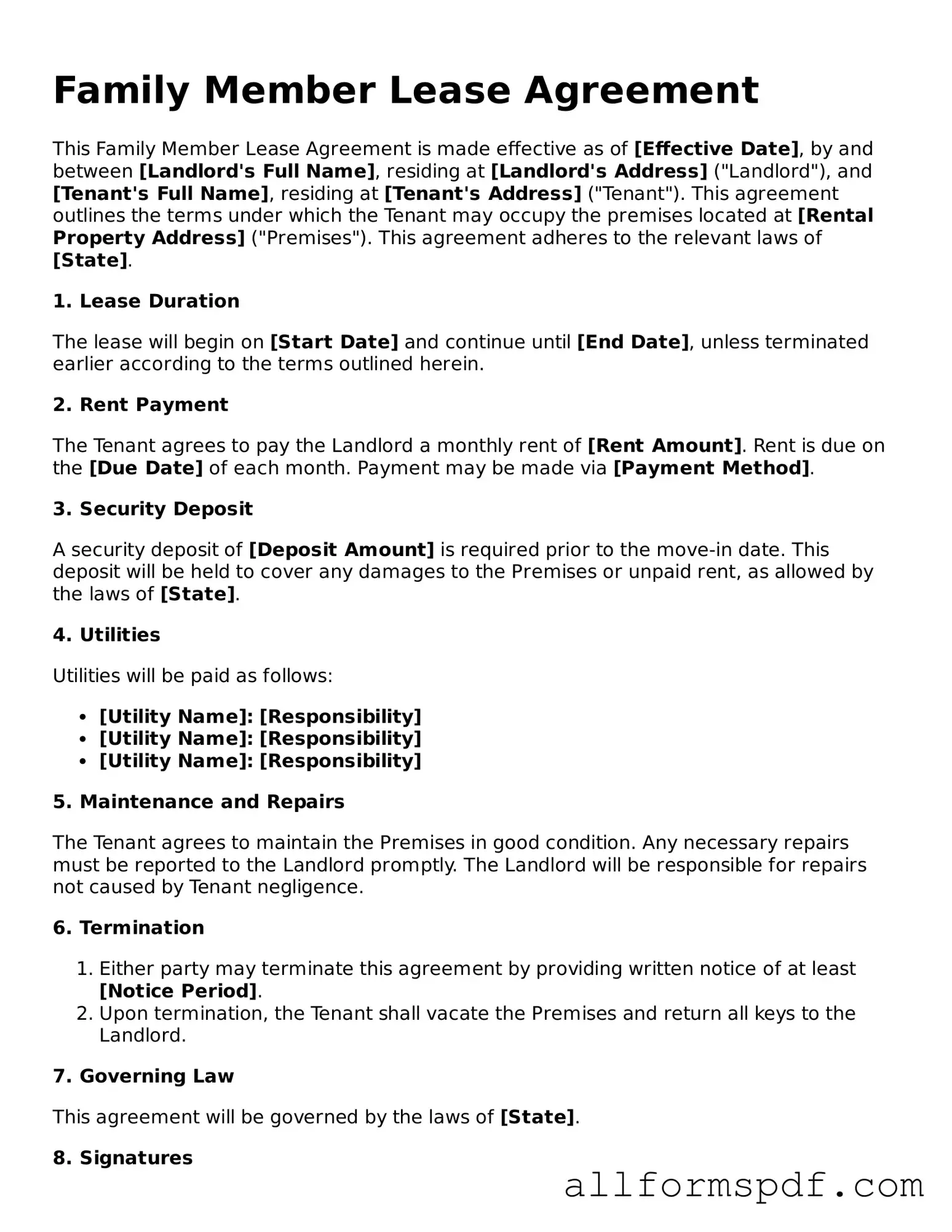Filling out a Family Member Lease Agreement can seem straightforward, but many people make common mistakes that can lead to confusion or legal issues down the line. One frequent error is neglecting to include all required information. This form typically requires details about both the landlord and the tenant, including full names, addresses, and contact information. Omitting any of this information can create complications, especially if disputes arise.
Another mistake is failing to specify the terms of the lease clearly. It’s essential to outline the duration of the lease, the amount of rent, and the payment schedule. Without these details, misunderstandings may occur, leading to disagreements about when rent is due or how long the agreement lasts. Clarity in these terms helps ensure that both parties are on the same page.
Some individuals also overlook the importance of signatures. A common error is not having all parties sign the agreement. Even if the lease is between family members, a signature is crucial for it to be legally binding. This step serves as a confirmation that everyone involved agrees to the terms laid out in the document.
In addition, people sometimes fail to read the entire agreement before signing. This oversight can lead to unexpected obligations or restrictions. It is vital to review every section of the lease to understand what is being agreed upon. Taking the time to read the document can prevent future disputes and ensure that everyone knows their rights and responsibilities.
Lastly, many individuals forget to keep a copy of the signed agreement. After signing, it’s important to store a copy in a safe place. This document serves as a reference point for both parties and can be invaluable if any issues arise. By keeping a copy, you ensure that you have access to the agreed-upon terms whenever needed.
